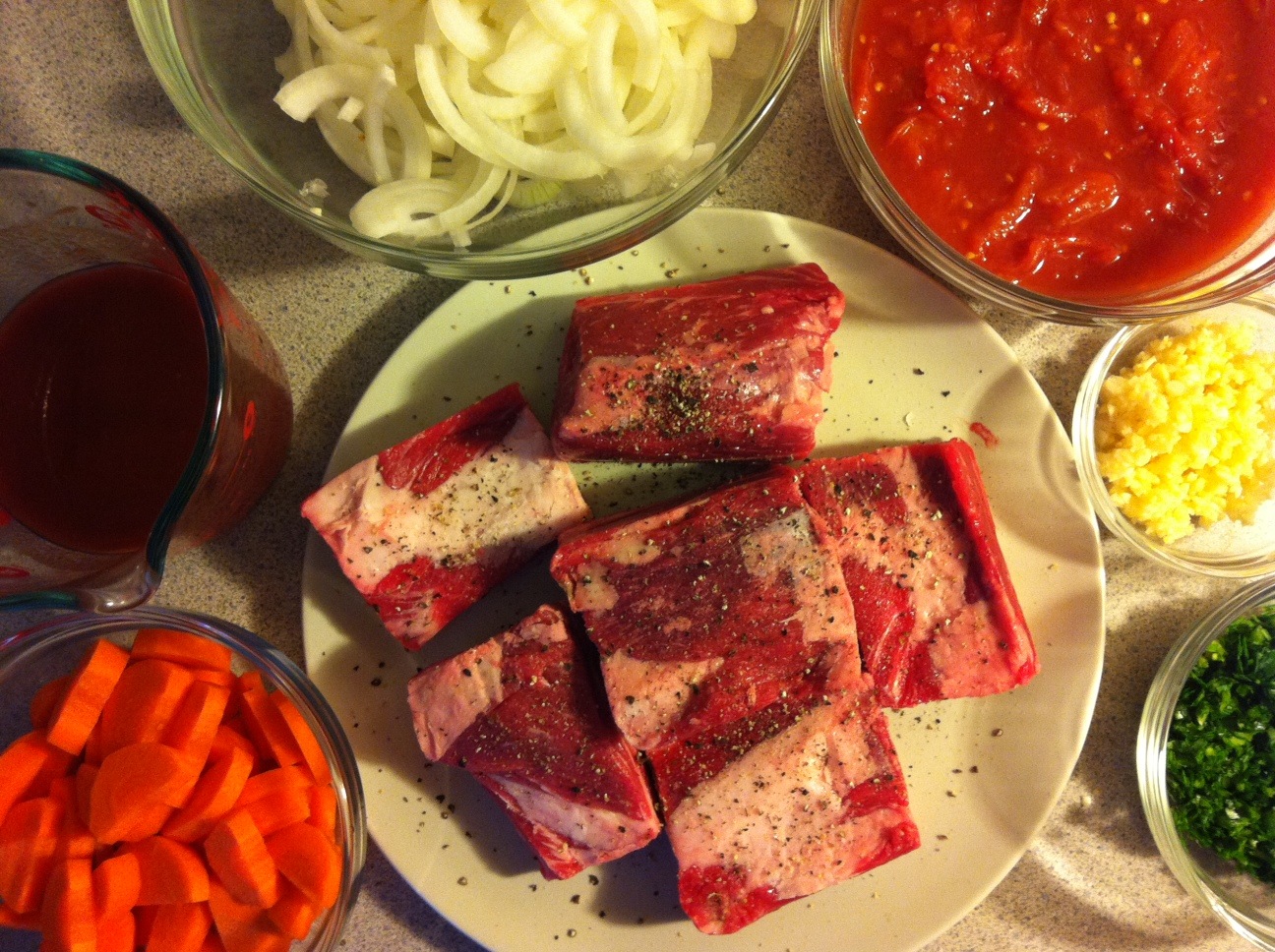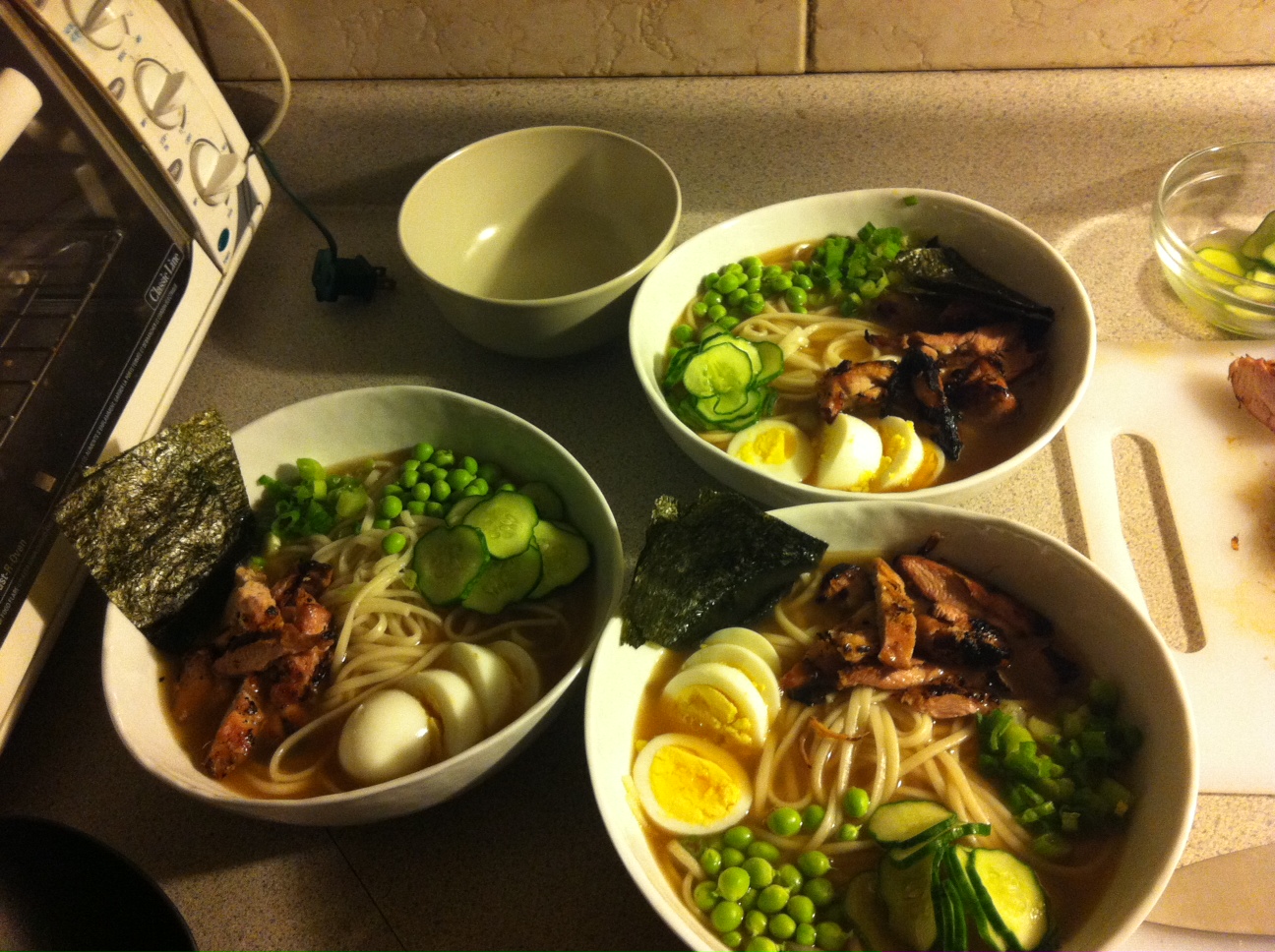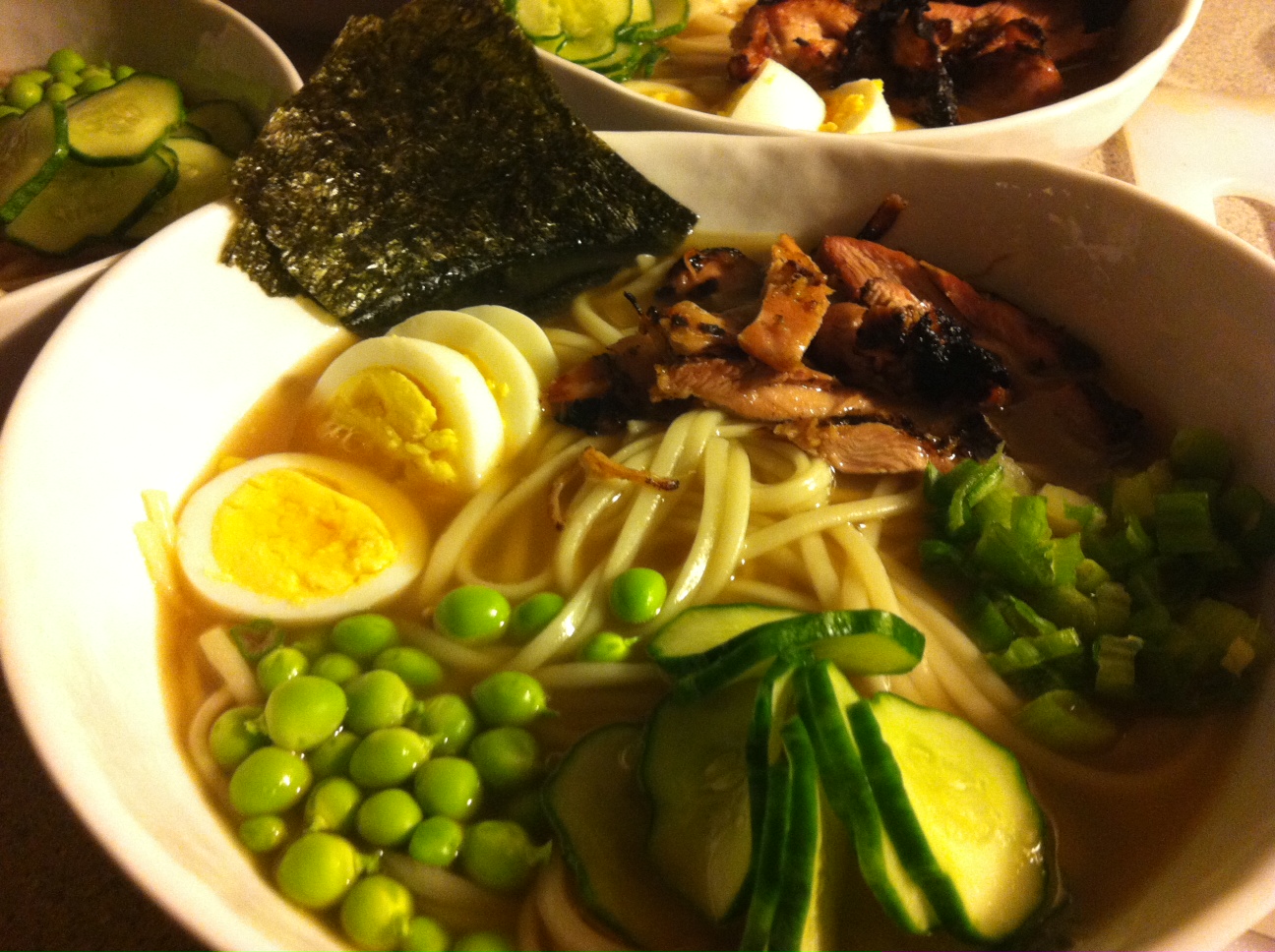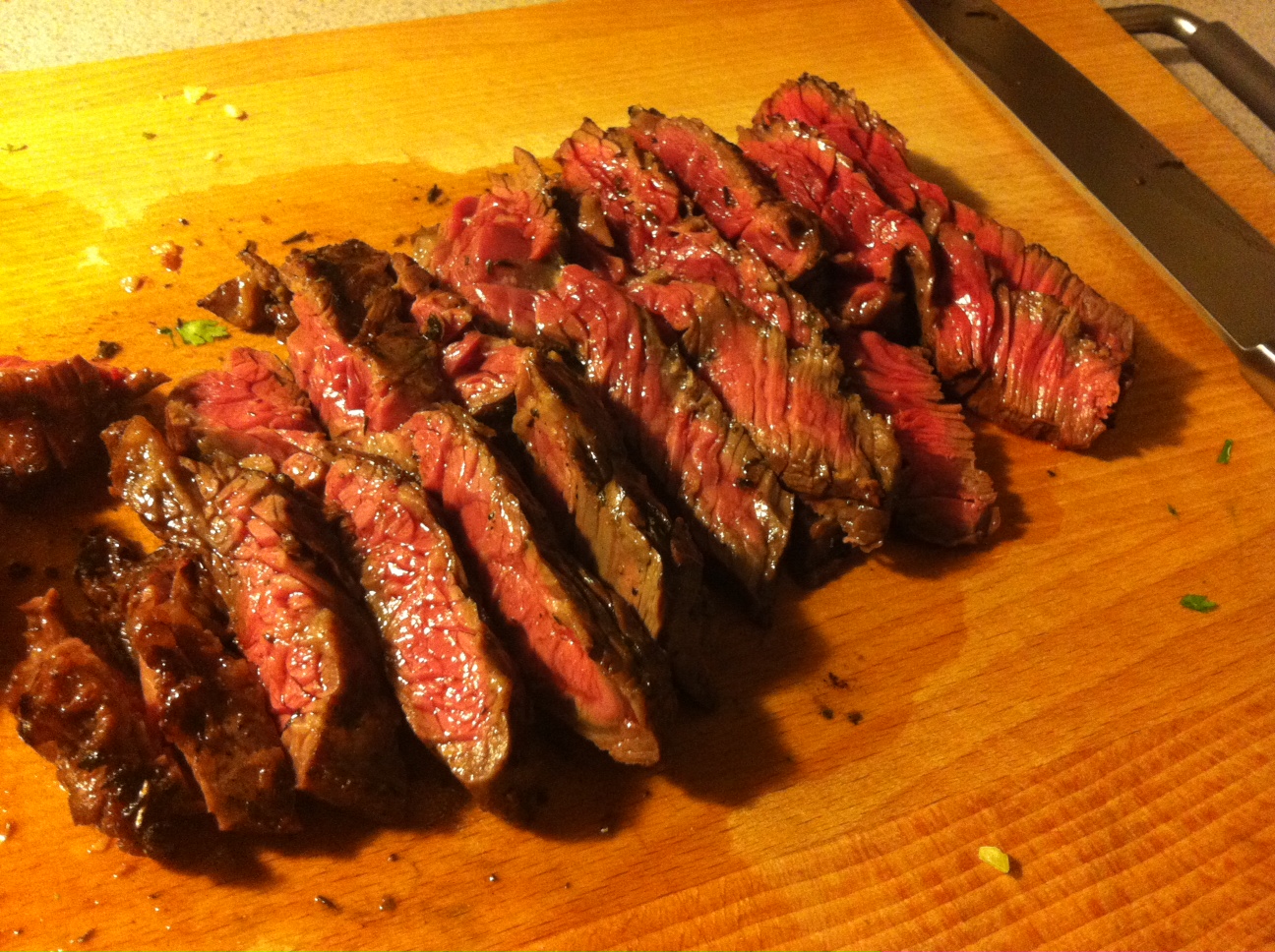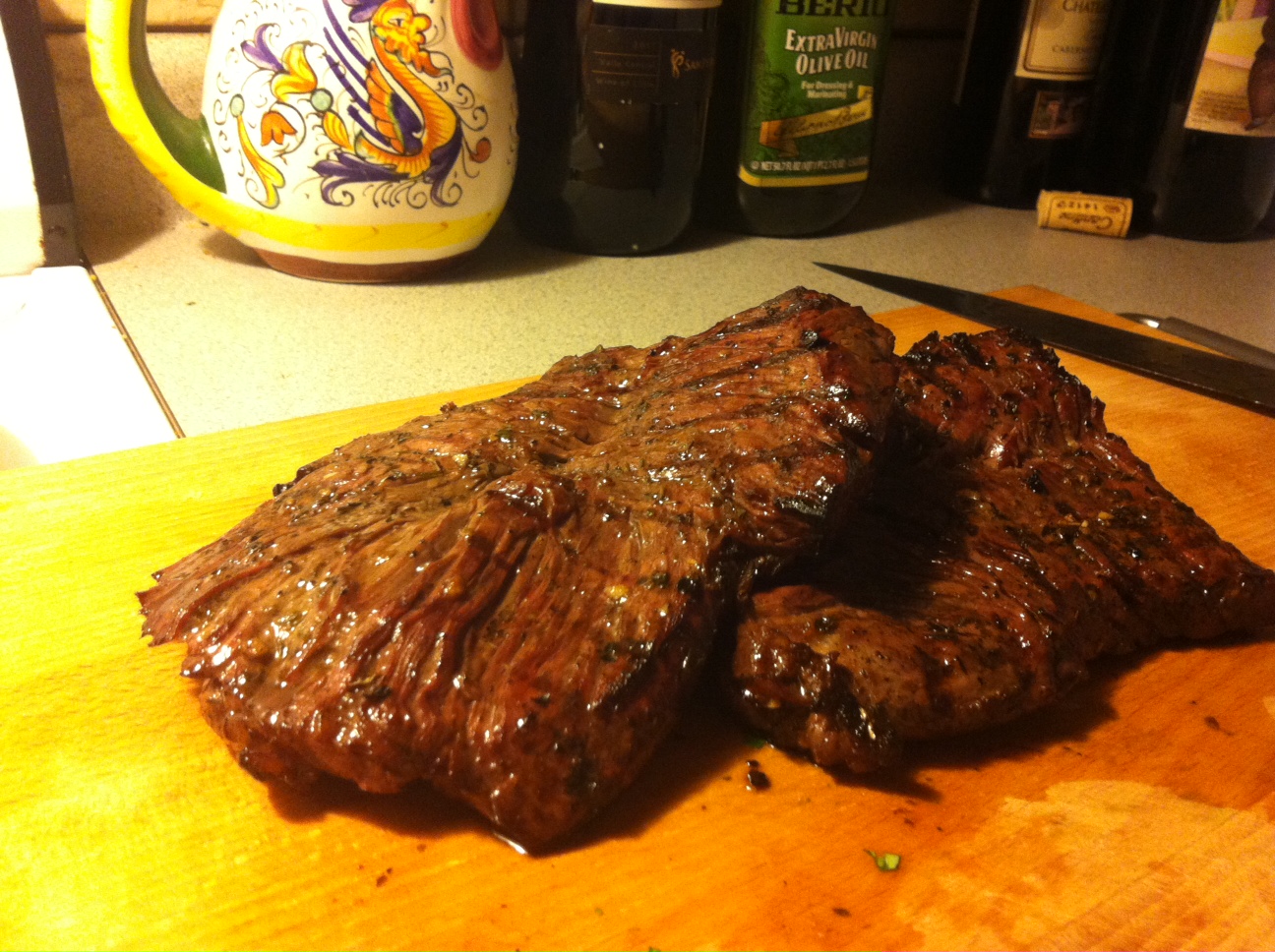Grilled pork chops with grape tarragon salad
My thoughts on this recipe can be summed up in three words: Brine, brine, brine. Dunking the pork chops into a brine with just a few ingredients (a bay leaf, thyme, garlic, salt and sugar) an hour before grilling produces incredibly juicy chops. Don't be afraid to pick out bone-in chops with a little fat around the edges -- it crisps up on the grill and adds a little more moisture. The anise-like tarragon and sweet grapes play very well together.
Colicchio's beef short ribs
Sometimes you read a recipe and just know: This is going to be a real improvement over any previous version of this dish. These Tom Colicchio short ribs are a perfect example. I'd noted a few weeks ago my desire to tackle them and compare to other short ribs recipes, so here you go. Look great, no? They taste even better.
The main improvement here is browning the ribs the day before and then marinating them overnight with vegetables and red wine. This really lets the flavor seep in. While it requires some foresight to get started the day before, the combined effort is no greater than the usual short rib braise. The next day you just pull them out of the fridge, braise them for a couple hours, blast them under the broiler for 10 minutes and then cook down the sauce to pour over top. The result of the long, uncovered braise followed by the time under the broiler is a pot full or almost ink-black ribs. They look pure and beautiful and taste as beefy as you'd expect.
Beef short ribs
I'll admit to being a bit of a short rib fanatic. Grilled, braised, stuffed inside pasta, shredded on top of polenta -- I just can't resist their many hearty charms. For some reason yesterday I got a fiending for short ribs, so here they are. (Part of me regrets not having spent some time looking into recipes in advance, as this one from Tom Colicchio looks incredible but requires planning a day ahead.)
I've tried a lot of braised short rib recipes and so far the best I've found is from The Silver Palate. Whereas a lot of options rely on reducing red wine, this one uses red wine vinegar. The result is a brighter tomato sauce with something bordering on tartness, which resists some of the unavoidable heft of the beef. (Some people may be turned off by this. If so, just substitute red wine for some or all of the vinegar.)
Here is the link for the recipe.
Udon, grilled chicken, peas, quick pickles, egg, scallions
Sometimes I get ideas. Often they aren't very good ideas, but as a matter of principle I tend to stubbornly pursue them until they prove to be really, truly bad.
Making my own ramen broth certainly appeared to be one of these bad ideas. It required a trip to the further-than-usual supermarket to track down "meaty pork bones." (I soon triumphantly returned holding aloft a bag containing 5 pounds of pig vertebrae.) It also required turning the oven to 400 degrees in the middle of a heat wave.
But this idea turned out to be a great one. Not only because I have woken every day since to an apartment that still smells of smoky pork goodness, but because the broth itself is mighty fine.
David Chang's Momofuku cookbook is not the sort of thing you'd want to cook from every day. It's one part cookbook, but also one part picture book, one part memoir, and eight parts vanity project. Many of the recipes explicitly make the point that they relate exactly how things are made in Chang's restaurants while also implicitly making the point that you can't cook them because you're not David Chang.
Nevertheless, this broth is great. It is certainly a time-consuming production, but in terms of real work and technical skill it is a breeze, mostly just throwing various meats into a pot and watching to make sure nothing boils over. I will direct you to a literal relating of the recipe here and note only that it requires four pounds of chicken, five pounds of the aforementioned meaty pork bones, a pound of pork belly, a few strips of seaweed and a handful of vegetables.
Ruth the cat came over to help me and Anna consume the broth. Usually she just eats milk for dinner but on special nights we serve her ramen.
A few notes on the other accoutrements:
Chicken was done quickly on high heat on the grill after an hour or so marinating in a combination of ginger, garlic, canola oil, soy sauce and fish sauce. Hard boiled eggs were, well, boiled. Fresh peas, which are perfectly in season right now, required no work other than shelling and were sweet as could be when thrown into the bowl raw. Scallions were sliced and tossed in.
Quick pickles were also from Chang, and are simple enough: Slice the cucumbers thin. Toss with one part salt to three parts sugar until well coated, and leave for 15 minutes. If they taste a little too salty or sweet, rinse them in water. Otherwise, they're good to go.
Grilled hanger steak
1/4 cup soy sauce
1/4 cup red wine vinegar
1/4 cup olive oil
1 tbsp honey
2 cloves garlic, minced
1 tbsp thyme, shopped
1 tsp dried oregano
1 tsp black pepper
Hanger steak
How to
I owe this one to Whitewater Cooks at Home, which above all is an awesome summer cookbook here on the East Coast. Those West Coasters don't know how good they have it!
Whisk together all of the above ingredients. Pour it over over the hanger steak in a bowl, and leave it in the fridge to marinate overnight. The next evening, toss it on the grill for ten minutes or so, let rest for ten more, and dig in. This is great served with some sort of acidic sauce -- sharp salsa verde, maybe a citrus aioli, or anything else that fits the bill.
Pork chop, balsamic tomato mustard sauce
2 bone-in pork chops, one inch thick
2 cloves garlic, minced
2 tbsp balsamic vinegar
1/4 cup shallots, chopped
1 cup cherry tomatoes, halved
2 tbsp dijon mustard
How to
Pork chops are a staple around these parts. They're easy and tasty and a relatively blank canvas that can handle any sauce you throw at it.
Heat a couple tablespoons of olive oil in a skillet until the first wisps of smoke appear. Add the pork chops and let them brown on both sides on high heat. Once they're well browned, add the shallots, garlic, balsamic vinegar and enough water or chicken broth to cover the bottom half of the chops.
Cover and turn to low heat. Allow the chops to cook for 5-10 minutes. They should give a little when you poke them. Remove the chops and allow to rest.
Meanwhile, toss the tomatoes and mustard into the skillet and stir. Reduce the sauce to a consistency you like and pour over the chop with a little fresh parsley or thyme. Serve with rice or couscous.
Balsamic chicken, tomato jam, corn salsa
Corn salsa
2 ears corn, kernels stripped
1 red pepper, diced
Handful cilantro, chopped
1 clove garlic, minced
3 scallions, thinly sliced
1 lime
How to
Sautee the red pepper and corn for 2-3 minutes in a hot skillet with a tablespoon of olive oil. Add the scallions and garlic and sautee for another minute or two. Remove from heat and toss with the cilantro and lime's juice.
The tomato jam is a fantastic accompaniment. Times are sad when we don't have a jar of this stuff on hand. For now, I'll just send you to the recipe, though a full-fledged post on the stuff is definitely in order.



